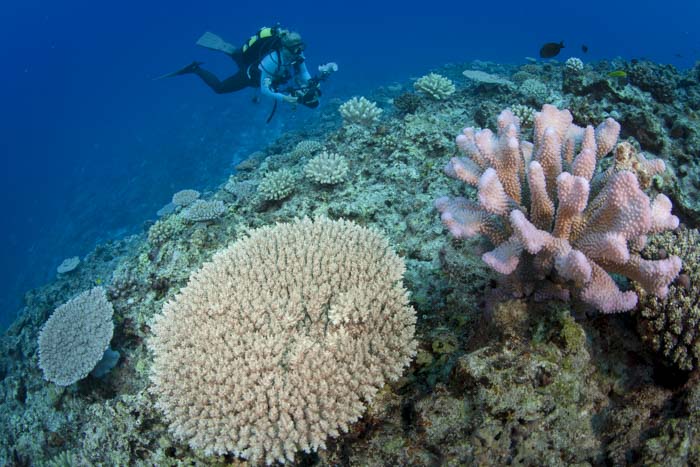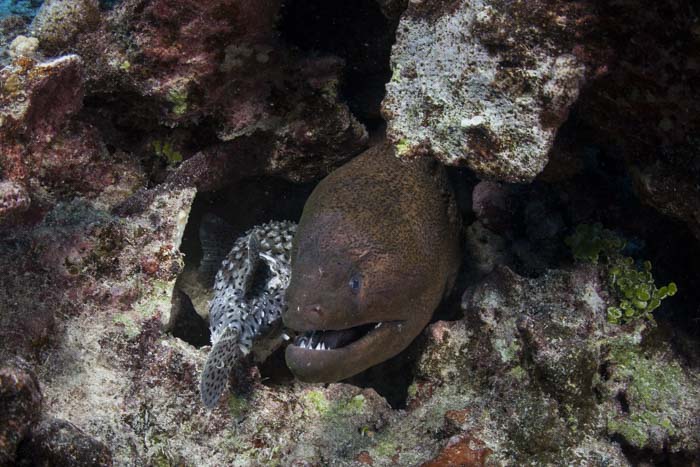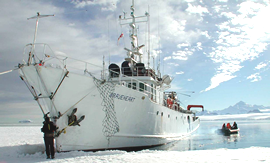We dropped anchor around midnight in sheltered waters of Vava’u Island, and this morning the RV Braveheart moved into Neiafu Harbour. We have spent the day clearing immigration, customs and quarantine; until these were completed we could not leave the vessel. So we spent the day updating all of our records to aggregate our collections with visual records (fishes that we have seen and could confidently identify) and photographs by Irene and Richard. So far we have recorded about 300 species of reef fishes, about 200 from collections and another 100 from photos.

Irene with her camera at Niue.

A giant moray with a spiny puffer in its lair.
Photo: Richard Robinson, www.depth.co.nz
So why don’t we photograph everything? A coral reef is definitely packed full of visible biodiversity, and a skilled observer can record 100s of species of fishes. But there are many nooks and crannies, caves and sand where fishes hide during the day and aren’t visible to an observer. Thus we need to complement our observations with collections that target these cryptic species – and it is surprising how many additional species we have recorded that haven’t been visible to the divers. In addition to this, the specimens that are collected can provide additional information to researchers in the future, such as diet, spawning season, genetic relatedness, morphological features to help distinguish similar species and, when we catch a new species, a voucher specimen that bears a new species name.
By Dr Tom Trnski












